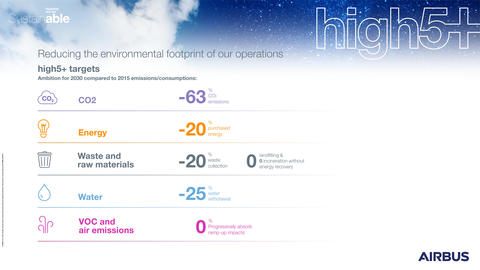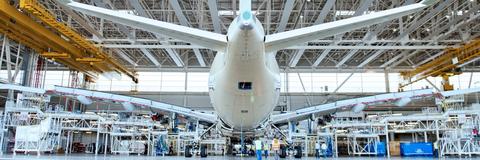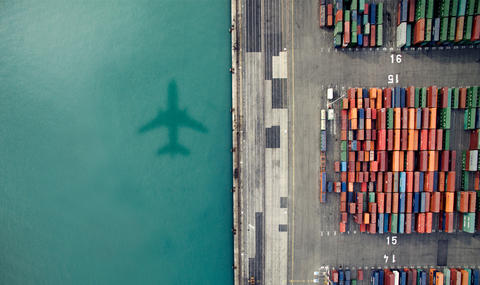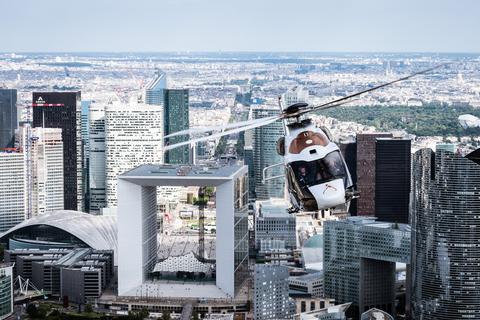At Airbus, our approach to environmental responsibility starts at the design stage and it doesn’t end there. During the manufacturing process, after delivery, and even at the end of an aircraft’s service life, we continue to search for ways to reduce the global environmental footprint of our aircraft.
Environmental responsibility across the entire lifecycle
An aircraft has an average lifespan of approximately 30 years before retiring from service. We believe in managing our products' environmental footprint across the entire lifecycle – including after they leave the final assembly line.
- Design: We significantly invest in R&D to design aircraft with lower fuel burn and that achieve better environmental performance than previous generations of products, including reduced NOx and CO2 emissions.
- Production and manufacturing: We use the environmental management system ISO 14001 to manage the footprint of our industrial operations.
- Responsible supply chain: We work closely with our suppliers to select materials that are sourced ethically and responsibly with lower impact on the environment.
- Operations: We support our customers throughout the aircraft’s entire service lifespan by developing sustainable fuels and air traffic management solutions as well as by offering services for fleet optimisation and in-service data analysis.
- End-of-life recycling: We dismantle our aircraft in a manner that maximises reuse and recycling, and focuses on the safe disposal of non-recyclable parts.
Reducing our manufacturing footprint at sites worldwide
Today, more than 85% of our 130,000 employees work under ISO 14001, which defines strong criteria for managing environmental responsibility.
Our high5+ programme targets a significant reduction of our environmental footprint in manufacturing activities. We measure our progress and publish it in the Annual Report.
- CO2: Airbus is committed to contributing to the Paris Agreement targets and leading the decarbonisation of the aviation sector in full collaboration with all stakeholders. We are accelerating our decarbonisation plan by committing to reduce our Scope 1 and Scope 2 industrial emissions by 63% by 2030 in line with a 1.5°C scenario. The use of sustainable aviation fuel combined with improved efficiency in operations will support this ambition, in addition to:
- Energy: A significant portion of our manufacturing footprint originates from our energy consumption. Today, we are working to increase the share of renewable and low-carbon energy at our sites. Improved monitoring, increased efficiency for lighting, heat and steam, and new construction in line with certified building standards are additional initiatives currently underway.
- Water: To limit our water consumption, we focus on increasing water recycling and reuse in our industrial activities. Increased measuring and monitoring is not only key to raising awareness of good practices, but also to finding opportunities to further reduce waste and detect leaks.
- Air emissions: Air emissions, such as volatile organic compounds (VOCs), are mainly related to surface cleaning, or treatment and paint. Even with delivery rates increasing, we aim to maintain 2015 levels.
- Waste: New ambitions as part of the high5+ programme have been set for waste management for 2030. These include reducing the amount of waste we produce by 20%, diverting waste from landfilling and avoiding incineration without energy recovery.

Optimising fuel efficiency during operations
Our mission to develop aircraft that produce fewer emissions does not end at the design stage. All in-service aircraft can continue to improve their fuel consumption by optimising their air traffic management practices.

Air traffic management
Reducing emissions by changing the way we fly
Direct routings can result in approximately 10% less fuel consumption in aircraft, as well as significantly reduced CO2 and noise emissions. This is why we develop modern air traffic management systems in collaboration with our subsidiary Airbus NavBlue and work closely with a range of partners to further optimise in-flight operational efficiency.
Recycling or reusing up to 90% of our aircraft
Within the next 20 years, more than 12,000 aircraft are expected to retire from operations. If not properly recycled, these end-of-life aircraft will contribute to a lot of waste in landfills.
In 2005, we were proud to be the first manufacturer to undertake a voluntary approach to aircraft decommissioning and aircraft recycling. Today, Airbus and Tarmac Aerosave have established a proven method for decommissioning, dismantling and recycling the entire Airbus aircraft product range in an environmentally responsible way. We are able to recycle 92% of an aircraft's total weight.
Where there are parts that we cannot recycle, our focus is on safe disposal of this waste.


